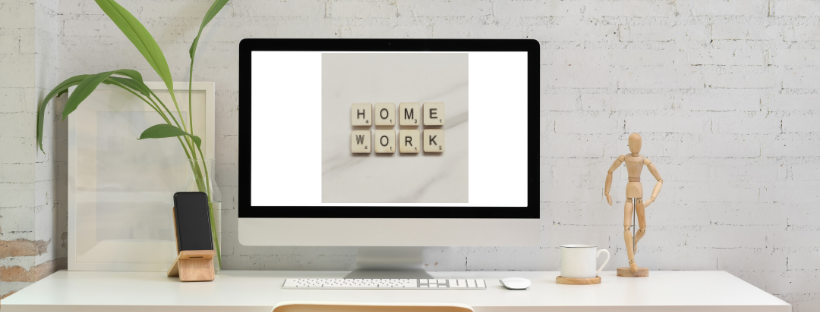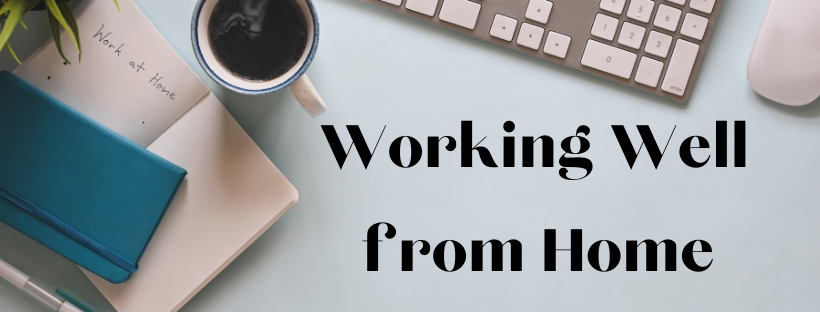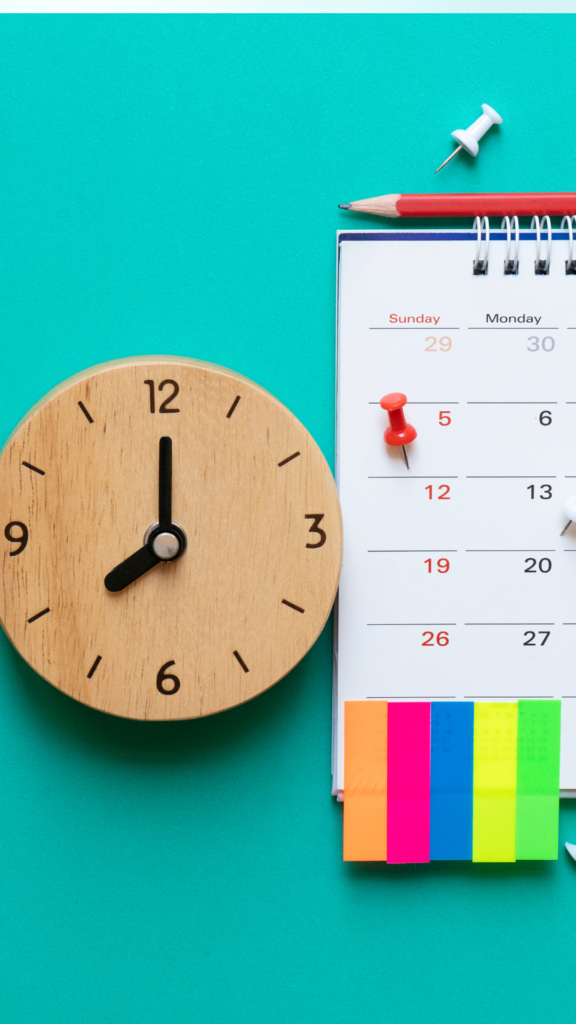How to Work Well from Home
This expert guide covers all the tips you need to Work Well from Home. Find out how to optimise your remote working so you work well and thrive.

How is home working going for you?
Like it or loathe it, it is likely to be part of our new normal going forward. Like many of us, I have been working from home recently. It took some getting used to, and now I am really loving it. In this process, I drew on skills from all areas of my working life, and drilled down to answer this question; how can we all work well from home?
Work Well from Home – What’s to Like?
Flex
This is the key really. Working from home is so much more flexible.

In Occupational Health, home working is encouraged for some as flexibility allows workers to literally ‘work around’ the constraints from their health condition, for example, those with limited mobility benefit from no travel.
For those with caring responsibilities or portfolio careers it can offer freedom to fit work alongside other commitments.
Cost Savings
For many, home working is cheaper as it cuts the cost of travel, equipment and all those lunches we used to eat out! Avoiding the commute is another key reason workers like working from home.

Work Well from Home – Managing the Challenges
There are a fair few challenges on the list – but fear not! Not all are likely to apply to you and I have included handy tips to manage each one.

Boundaries
The natural corollary of flexible working is the potential to blur boundaries between home and work.

Work Wear
We have all been there, working in our PJs, never leaving the house…? Maybe a posh top for that zoom call but strictly trackie bottoms from the waist down?
I love my trackie botts so am not one to judge. Snag is, although working in ‘lounge wear’ can seem like you are being kind to yourself, in fact it can have the opposite effect by blurring boundaries between your ‘work life’ and ‘home life’. This, in turn, can prevent you feeling you are ever ‘off work’.
The Third Space
Strange though it may sound our commute had hidden benefits. It represented a transitional space, ‘the third space’ being neither home nor work. This allowed us to mentally prepare for work and to unwind after work.

Boundary Tips
Make tech work for you
Simple practices can be powerful, like setting ‘out of office’ on your email and turning off work notifications on your phone once you finish work.
Boundary Rituals

These allow you to emulate the ‘third space’ when working from home. Here are some suggestions:
- Ditch working those trackie bottoms ☺
- Try changing into work clothes and then back into home clothes once your work is done.
- Pause to really enjoy putting on those trackie botts as a signal you are now off work and can unwind.
- Or try a quick stretch, home exercise or walking round the block at the beginning and end of the workday.
- Simply telling yourself ‘I am at work now’ and ‘Now I am off work’ can help.
Interruptions
The type of interruption depends on your home circumstances of course.
Living with others
My workspace is in the kitchen so I have the delights of music, the blender, the ping of the microwave to name but a few, as a melodious backdrop to my work. Ironically, the blender interrupted the writing of this paragraph!
Dealing with Interruptions
Simple strategies like noise cancelling headphones, ear plugs, or even a rota outlining who works where and when can help.
If you have children – telling them who is looking after them and who is working can help them interrupt the right adult!

Dealing with Interruptions for all
Clearly communicating when you are available for that work call and when you are not can help. Simple actions like asking to call people back if they interrupt your work and booking times for calls are useful.
Work Environment

My kitchen (so light and airy for dining) becomes an oven with no respite from computer screen glare on sunny days. This led to a grim headache then working wearing sunglasses until my online order for a window shade arrived.
This illustrates a simple point about human physiology. We are sensitive to our physical environment. Levels of heat, noise and light matter, and can impair our productivity if not set right.
Take regular breaks every 20 mins away from the screen to reduce eye strain and take a minute when settling to work to optimise these factors in your work environment.

6 Tips to Work Well from Home
1. Are you sitting comfortably?
How you sit matters. Sounds self-evident? Simple adjustments to desk, screen, chair height, and using a phone headset can reduce muscular pains which can be a real pain in the (dare I say it..) neck. The Health & Safety Executive have a really useful workstation checklist and this video takes you through how to achieve a good posture whilst working on a computer at home.
It only takes a few minutes and really pays off – I made a few changes myself whilst researching this article and am now a lot more comfortable at my desk!
2. Move more!
As you are not traveling to work you need to actively choose to move and get outside.
How about a walk or run on your lunch break? Or one of the many online exercise classes?
3. Take your breaks

These are key to productivity. Take small breaks often. One of my favourites is the Pomodoro technique, where you take short 3-5 minute breaks every 25 minutes. The block of intervening work time is named a ‘Pomodoro’ after the tomato shaped kitchen timer used by the Italian who developed the method. After 4 such ‘Pomodoros’, take a longer break.
4. Connect
Make the effort to clap eyes on a real human being each day, if at all possible. Even if this is just walking past strangers in the street or whilst shopping. We are social creatures and real human contact is central to our holistic health.
Of course, this is not always possible at present, so here are some ways to optimise your sense of connection when using technology:
Video Calls
These allow you to pay full attention to the expression of colleagues and their non-verbal cues. Use silence when appropriate just as you would in real life interactions. Start with some non-work chat to build relationships and establish rules about how to communicate – e.g. turn taking. A brief check-in at the outset can add context, where everyone briefly gives an update of their activities since the last meeting.
Phone
Use the phone more often. Be creative – maybe a ‘walk and talk’ meeting where you head out with your mobile and headphones to walk while having that telephone brainstorming session.

Post
How about a good old-fashioned letter or parcel? It can really make a difference to how you connect with friends and family as it is a physical object you are permitted to touch. Though it is too slow for the needs of some work tasks, it may be suitable for others?
5. Trust

Some of us feel the need to ‘prove’ we are working, so we end up working more hours or doing ‘busy work’. This saps our reserves without aiding productivity.
This kind of presentism is no good for you or your team. Trust is the antidote.
Of course, workplace trust is complex. Transparency, time to develop working relationships and clear expectations can help.
Central is the mutual understanding that working from home is not identical to working within the workplace. You will not be available in the same way, but in good working relationships the fact you get good work done should be the prime focus. Check out this article on how to build trust when your team is working from home.
6. Stress
Tips to reduce stress when working from home
Isolation and loneliness can take their toll, especially if your remote working is emotionally draining and unfamiliar. So what can we do about this in order to work well from home?
Leverage all the support out there
What do you need right now to feel less stressed?
Flexible working can provide opportunities to meet wellbeing needs which work outside home does not. Perhaps a run or some gardening on a break? What about that sourdough you have been always intending to master? Could you start your day with an early morning zoom yoga or PE class and work until later to make up the hours?
Speak up and ask for team support, and join a group to get peer support. Maybe your workplace has a WhatsApp group? Or how about ‘after work zoom drinks’? For medics, the Medic Footprints community Facebook group is a great resource.

Expectations and Permission
Setting unrealistic expectations of how much you will be able to do will sap your motivation; how about a ‘work done’ list to celebrate progress? And weekly and daily objectives to aid productivity?
Be kind to yourself. Nothing in life is perfect, including work, and that is OK. See my previous article on Permission.
Training and Supervision
It is likely to be more difficult to access support and supervision, so plan ahead with your manager when and how you can touch base and do so regularly, especially at the outset.
Get any training you need – be it how to work the new software or the ins and outs of remote consulting.

Daily Structure
It is helpful to structure your day, to pace yourself, measure progress and keep work feeling more familiar.
Tailor to your needs
Everyone is different, with different home and work circumstances. There is even some discussion that where you sit on the introvert/extrovert scale and how much you relish new challenges will impact how well you adapt to home working.
We all have different stress triggers. Pausing to reflect on what works well for you and how to meet your particular needs is a great idea.
Mind has developed a handy Wellness Action Plan tool for this – see here.
Have Fun!
Play music on your breaks and dance around the kitchen, jazz up your home notice board – whatever floats your boat really! Seize this opportunity to give your individuality a chance to spread its wings…
A Win-Win
Well planned and implemented home working can be a real game changer, offering a win-win for all parties.
So – here’s to us all Working Well from Home.
For more on working well from home check out this SOM article and my Working Well from Home Toolkit by the Working Well Doctor.
Other handy places to look are the HSE, ACAS and MIND websites.
Latest posts by Katya Miles (see all)
- How to Work Well from Home - 7th July 2020


